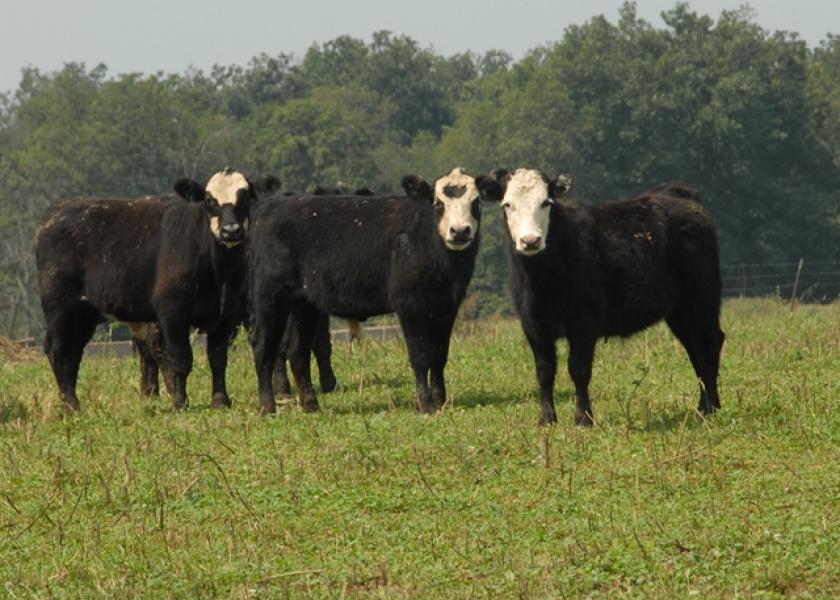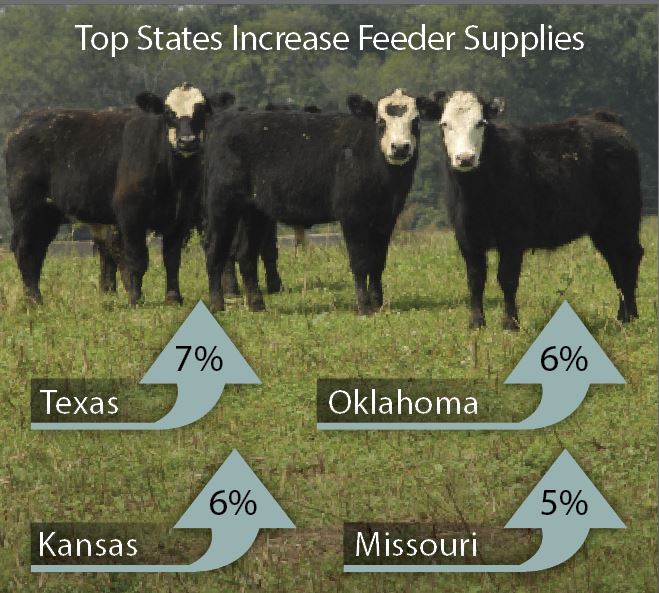Stockers Shift to the Plains and Midwest

Environment and feed availability key factors to increase
Feeder and stocker calves are continuing to move to the central portion of the country before entering feedlots, said Derrell Peel, ag economist, Oklahoma State University, at the 2015 Cattle Industry Convention Cattlemen’s College in February.
“Herd inventory numbers weren’t unexpected,” Peel said. Everything that has stemmed expansion the past few years was external—drought, feed, etc. “Cattlemen were ready to go when drought let them. We probably have the youngest cow herd ever,” Peel said.
Even though producers have been aggressively retaining heifers, there was a slight increase in the calculated feeder supply. “This is not a number we get from the report, so we calculate it as a residual,” Peel said.
“Yes, supplies are slightly higher, but it’s still a small number. We have a very tight feeder supply and will continue to do so.”
 |
As of Jan. 1, U.S. feeder supplies were up slightly, with significant increases in the Southern Plains and Midwest. |
In Peel’s regional breakdown of feeder cattle supplies, Texas ranked No. 1, up 7%; Oklahoma up 6%; Kansas up 6% and Missouri up 5%—all states that typically have a fairly large number of cattle outside of feedlots.
The July 1 semi-annual report only has a national total, not a state breakdown, so less information about where cattle are during the summer is available, Peel notes. “Nevertheless, you can see the majority are in the Southern Plains, Midwest and Northern Plains,” he says.
To have some sense of how cattle move around the country, Peel calculates a stocker ratio for key states. “We can only do it on Jan. 1 with the state-level detail in the inventory report. But this takes the estimated feeder supply, both for the country and individual states, dividing it by that state’s calf crop the year before. So it’s a crude measure of how many cattle are still in the state on Jan. 1,” Peel said. “It’s not a good measure, but our system doesn’t really measure stocker cattle well.”
On average, the U.S. has 74% of the previous year’s calf crop still out there in estimated feeder supplies. “Why not 100%?” Peel asked. “We’ve already taken some of them out as replacement heifers, so we are counting them in a different category. Some are already in the feedlot. And we are including other factors, like veal slaughter on the dairy side, because this is across the entire calf crop.”
Whenever the ratio is above the national average of 74%, it broadly suggests an inflow of cattle. States lower than the national average, such as Montana or Florida, suggest an outflow of calves for feeding and finishing.
“There is a tendency for stocker cattle, or backgrounding cattle if you will, to be in the middle part of the country,” Peel said, noting greater feed availability and closer proximity to feedlots.
“We don’t need a Ph.D. to hear what the market is telling us—we are too small. While we are at a high price level already, we have a ways to go from a correction in beef production,” Peel said. “Prices in 2015 will average higher than 2014—up to late 2016 and 2017 when we will finally see higher feeder supplies come to the yard.”







